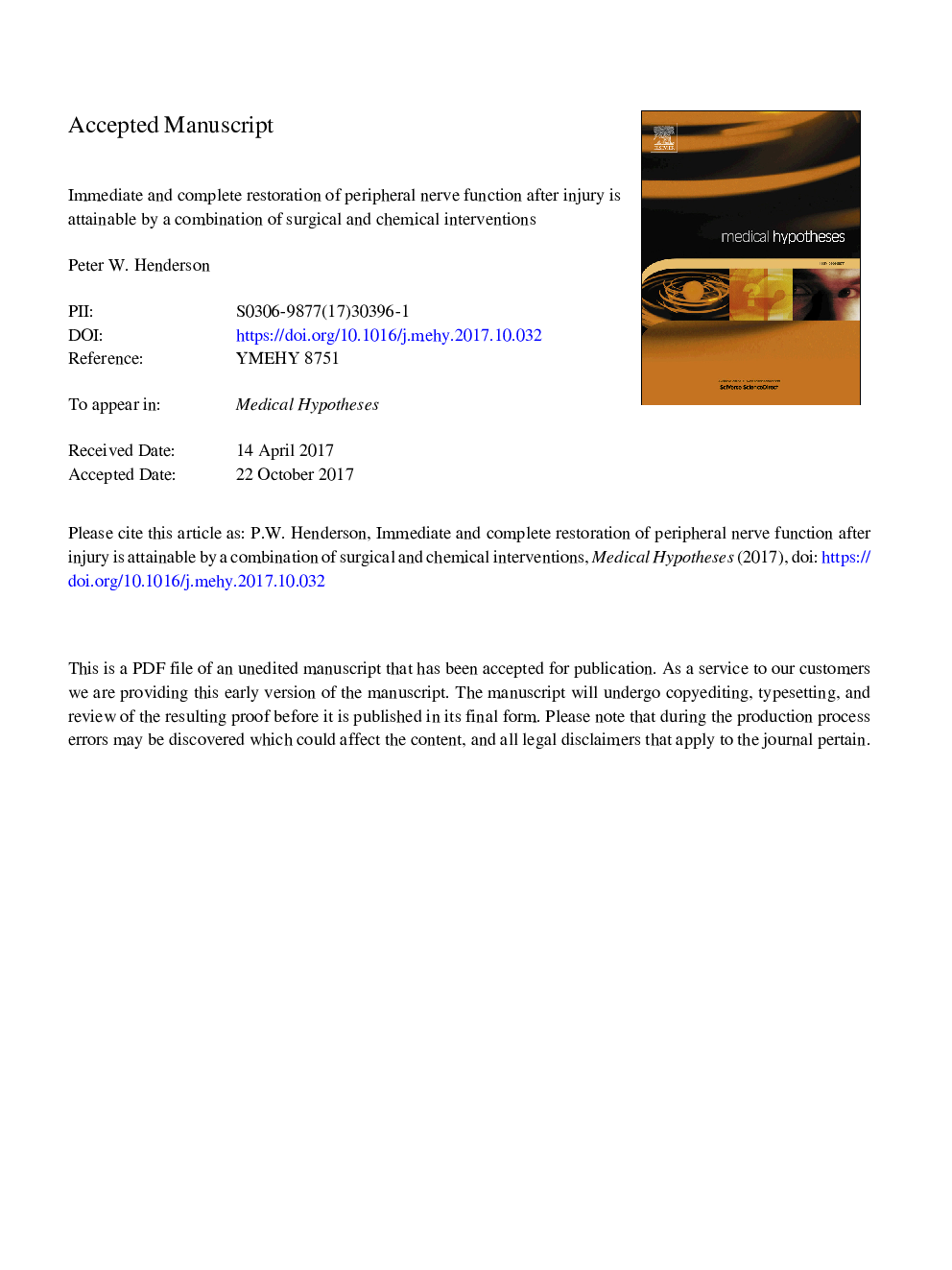| Article ID | Journal | Published Year | Pages | File Type |
|---|---|---|---|---|
| 8515914 | Medical Hypotheses | 2018 | 17 Pages |
Abstract
Despite significant advances in almost every other aspect of medicine, physicians are still unable to restore function after nerve injury with any consistency or reliability. The current standard of care (which involves coaptation of the two ends via epineurial sutures) is largely unchanged from its first description over 400â¯years ago, and unfortunately leads to a recovery that is at best slow (taking months or years) and partial. Encouragingly, two new conceptual approaches are being developed that separately have been shown to improve outcomes. The first approach involves optimization of the mechanical aspects of nerve coaptation (with an emphasis on exceedingly “clean cuts” of the axon ends and moving any suture material far away from the coaptation site). The second approach involves manipulation of the chemical composition of the local environment at the cut ends of the nerve in order to promote re-establishment of membranous continuity. Though neither approach currently leads to results that reach those of uninjured controls, there is reason to believe that these two approaches can be used concurrently. Thus, we hypothesize that immediate and complete restoration of peripheral nerve function after injury is attainable by a combination of surgical and chemical interventions. The combination could be tested in rodents and non-human primates by assessing histology, electrical activity, intracellular diffusion, and functional status and could likely rapidly move to a clinical trial in humans. If the hypothesis is proven to be true, its impact would be profound, as it would positively affect not only recovery after traumatic nerve injury, but also functional status after allotransplantation, as well as introduce the prospects of advanced interfaces between human nerves and computer circuits.
Related Topics
Life Sciences
Biochemistry, Genetics and Molecular Biology
Developmental Biology
Authors
Peter W. Henderson,
